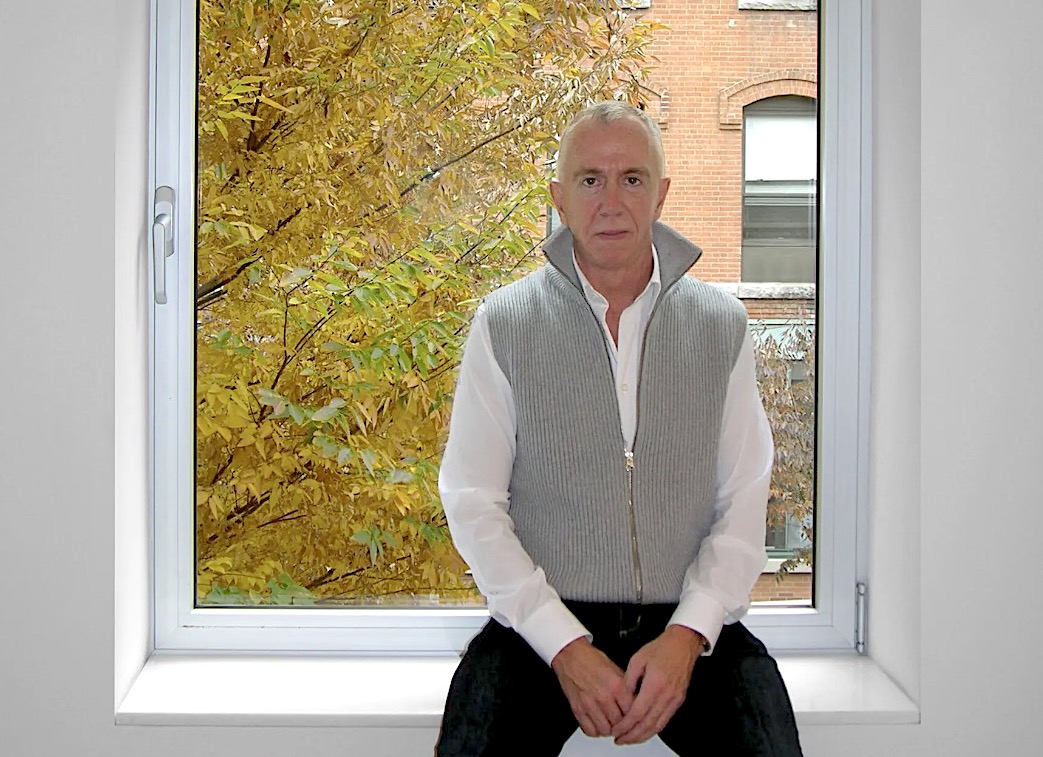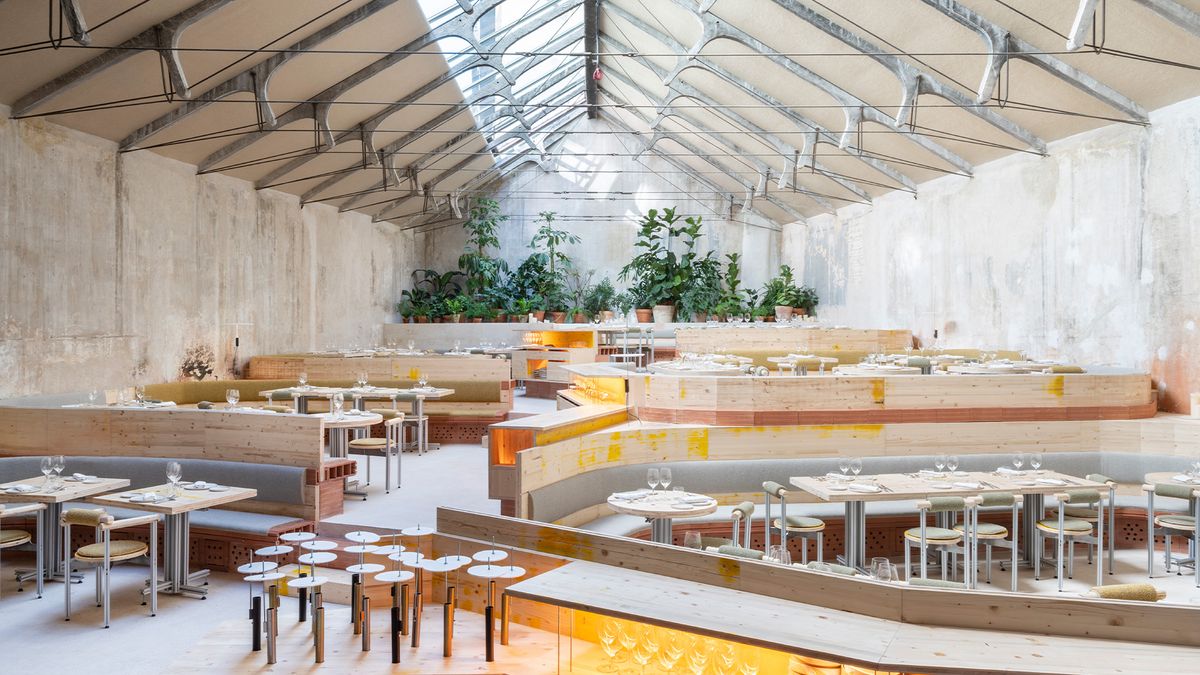Fairy #2
2011 - Painting (Painting)
Masaya Chiba
Fairy #2 (2011) depicts a surreal scene of roughly assembled household ephemera, potted plants, and a faintly visible figure rendered in thin red line. The picture shows a grouping of tables and stools arranged in a dense cluster. A collection of objects, all brown or burlap-hued, cover their surfaces: ceramic pots, wooden planks, roughly geometric wooden sculptures, and even a small figure that perches precariously atop of miniature cube alongside a forked wood finish form. Chiba’s use of a nearly monochromatic palette makes it difficult to discern many of these objects, and they only become recognizable from their faint resemblances to things in real life. The picture’s monochromatic field, however, is interrupted by color three times: by the French blue finish of a stool positioned in the background, by the leafy green foliage of two potted plants, and by the nearly imperceptible red line drawing of a figure superimposed over the dense assemblage in the foreground. Presumably the “fairy” of the work’s title, the red figure looks towards the viewer with soft eyes and a delicate smile and at first glance appears benevolent. Chiba, however, renders the fairy into a violently contorted posture, its arms and legs twisted to conform along the shape of the objects piled behind it. Alternately playful and curiously violent, Fairy #2 offers a dreamlike image that is at once reminiscent of bedtime stories and apocalyptic fears. In this context, the “fairy” could be seen as an imaginatively playful creature, but it could also be read as an allusion to the faint bodily outlines left behind during the nuclear bombing attacks on Hiroshima and Nagasaki during World War II.
Masaya Chiba utilizes painting, sculpture, and installation to create dreamlike works that respond to Surrealism traditions while also exploring the limits of representation and translation. Many of his paintings begin as assemblages in his studio, and in preparing these installations, Chiba collects seemingly random assortments of objects – photographs, wooden planks, potted plants, excess paint – to stage unusual material landscapes. Other objects used in his paintings are also drawn from memory, suggesting an illusory attempt to recapture objects and experiences that no longer exist in the present. Once configured into a desired form, Chiba utilizes these installations and objects as studies for his richly rendered oil paintings. Seemingly whimsical at first glance, his pictures also suggest an undercurrent of anxiety and instability, as if the perceptible world was melting away below us.
Colors:
Related works sharing similar palette
» see more

© » ARTS EQUATOR
Weekly Southeast Asia Radar: Puja Pantai in Selangor; young Cambodian singers talk old music | ArtsEquator Thinking and Talking about Arts and Culture in Southeast Asia ArtsEquator Radar AP January 16, 2020 ArtsEquator’s Southeast Asia Radar features articles and posts about arts and culture in Southeast Asia, drawn from local and regional websites and publications – aggregated content from outside sources, so we are exposed to a multitude of voices in the region...
Related artist(s) to: Masaya Chiba » Alain Declercq, » Antoine Prum, » Damien Deroubaix, » Enrico Lunghi, » Jesper Just, » Kara Walker, » Manuel Ocampo, » Mudam Luxembourg, » Nedko Solakov, » Pierre Bismuth
» see more

© » ARTLYST
Kara Walker
Brent Sikkema, the Manhattan art dealer renowned for representing artists such as Jeffrey Gibson and Kara Walker found dead The post Brent Sikkema – Visionary Art Dealer Of Jeffrey Gibson And Kara Walker Murdered appeared first on Artlyst ....

© » KADIST
Kara Walker
2005In her masterpiece 8 Possible Beginnings or The Creation of African-America , Walker unravels just that, the story of struggle, oppression, escape and the complexities of power dynamics in the history following slave trade in America...
Related works found in the same semantic group
» see more

© » KADIST
Prabhakar Kamble
2022To produce the series of sculptures collectively titled Utarand , Prabhakar Kamble relocated his studio to Kolhapur, Maharashtra, near the village where he was born into a family of daily wage earners...

© » KADIST
Prabhakar Kamble
2022To produce the series of sculptures collectively titled Utarand , Prabhakar Kamble relocated his studio to Kolhapur, Maharashtra, near the village where he was born into a family of daily wage earners...

© » KADIST
Charles Gaines
1980To make his series Shadows (1980), Gaines subjected 20 potted plants to a uniform procedure...

© » KADIST
Futurefarmers
2012In 2011-12 the San Francisco-based collective Futurefarmers staged a 10-part series of conversations and collaborations with scientists, theorist, and philosophers inspired by Charles and Ray Eames’s film, Powers of Ten (1977)...



